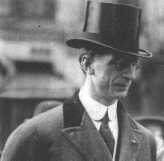





CONFLICTS IN IRELAND
The Fame of Tipperary Group present...
 |
 |
 |
 |
 |
 |
CONFLICTS IN IRELAND |
|||||
| THE 1916 RISING | |||||
Overview
The years preceding the 1916 Rising were marked by the rise of a number of key organisations which would all play a part in the fight for Irish Independence. The Irish Parliamentary Party represented the electoral majority of the Irish people before 1914 and were campaigning for Home Rule for Ireland. The Sinn Fein Party was formed in 1905, founded by Arthur Griffith. The Irish Republican Brotherhood (IRB) was revived in the first decade of the century. By 1909, a Youth branch called Fianna Eireann was also active.
James Connolly had founded the Irish Labour Party in 1912 and was leader of the Irish Citizens' Army by 1914. In January 1913, the Ulster Volunteer Force (UVF) were founded to prevent Home Rule in Ireland by force, if needed. By 25 November 1913, the Irish Volunteers was formed in Dublin by Eoin McNeill to ensure that the British Government would keep its promise to give Ireland Home Rule. Both Volunteers forces illegally imported arms in 1914.
By 1914, the Home Rule Bill for Ireland had been passed by the
British Parliament on the third attempt. A special arrangement
was promised for Ulster. However, it was suspended until the
after the end of the War. The Leader of the Irish Parliamentary
Party, John Redmond, encouraged the Irish Volunteers to join the
war effort for the defence for small nations such as Belgium. As
a result, the Irish Volunteers movement split and the majority
joined the National Volunteers.
Their motives are encapsulated in the lines by poet-soldier Tom Kettle, who himself died at the Battle of the Somme in 1916:
"Know that we the fools, now with the foolish dead,
Died not for flag, nor King, nor Emperor,
But for a dream, born in a herdsman's shed,
And for the secret scripture of
the Poor".
The remaining Irish Volunteers, under Eoin McNeill refused to
join the conflict in Europe. They believed that an armed force
should remain in Ireland so as to force Britain to honour her
promise for Home Rule. By 1916, they numbered 16,000 and many
were also members of the IRB. However, the Irish Volunteers'
leader McNeill was not a member of the IRB and was well-known to
be opposed to such a rising. By 1916, Connolly had also joined
IRB, hoping that a such a rising would lead to a socialist
republic. John Devoy, an old Fenian and leader of Clan na Gael in
the United States, was in close contact with the IRB's plans for
a rising and sent money to assist the Rising.
The 1916 Rising was planned for Easter Monday 1916 by the Military Council of the IRB. Its problem was to activate the Irish volunteers despite McNeill's opposition. McNeill was eventually persuaded to call for a rising. Meanwhile, Roger Casement had secured arms from Germany. However, his ship Aud was intercepted at sea by the British Navy whilst carrying arms to County Kerry on the Friday before the Rising and Casement was arrested. McNeill cancelled his orders on Easter Sunday in the newspaper The Sunday Independent, believing that any rising would be hopeless without arms.
Yet the Rising went ahead as planned. The GPO (General Post Office) in Dublin was selected as its headquarters, and this was where Padraig Pearse read The Irish Proclamation whic proclaimed The Irish Republic. It was signed on 24 April 1916 by the seven members of the Military Council who now called themselves 'The Provisional Government of the Irish Republic'. They were Connolly, Pearse, Ceannt, Plunkett, MacDonagh, Clarke, and MacDermott.
 |
 |
 |
 |
 |
 |
 |
| James Connolly | Patrick Henry Pearse | Eamonn Ceantt | Joseph Mary Plunkett | Thomas MacDonagh | Thomas James Clarke | Sean MacDiarmada |
The seven signatories of the Irish Declaration of Independence 1916.
(If necessary, use your scroll bar to move to the right to view all 7 images.)
Other Volunteers seized such buildings as the Jacob's Factory, Boland's Mills and The College of Surgeons. About 1,600 Volunteers took part, including Eamonn De Valera and Countess Markievicz.
The leaders of The Rising and their followers held out for a week, vastly outnumbered by the British Forces. On Saturday the 29th of April, Patrick Pearse gave the orders for an unconditional surrender.
In The Easter Rising, five hundred and fifty people died and over two thousand were wounded. About two and a half million pounds worth of damage was caused. Thousands of people were arrested for their part in the Rising and sent to prison camps in England, though many were innocent. The immediate attitude of the Irish public towards the Rising was one of anger, at the lives lost and damage done.
The leaders of the 1916 Rising were all put on trial. Fifteen were shot in Kilmainham Jail, Dublin between the 3rd and 12th of May. These executions caused a sea-change of attitudes and created much public sympathy towards the ideals of the 1916 leaders.
However, the death sentence for both 1916 leaders Eamonn
De Valera and Countess Markievicz were
reprieved.
Countess Markievicz |
 Eamonn de Valera |
THE TIPPERARY CONNECTION
Three of the seven signatories of the 1916 Proclamation had a Tipperary link. Sean McDonagh was born in the county while the father of Thomas Clarke was an RIC man in Tipperary and the mother of Eamonn Ceannt was also fromCounty Tipperary..
Despite efforts to mobilise by local IRB men like Sean Treacy,
the county did not rise in conjunction with the Dublin Rising.
Text © May 2001 Noreen Higgins
| Click on the map image to return to the IRELAND Index |